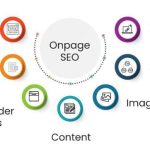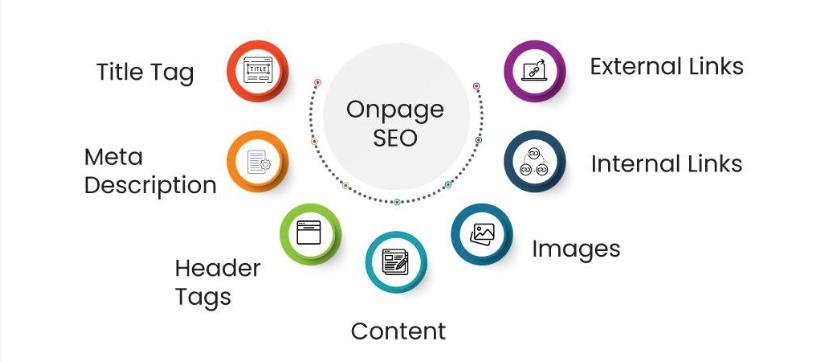Starting a blog can be an exciting yet daunting endeavor, but with the right approach, it can be a fulfilling journey. To make the most of your blogging journey, it’s essential to follow some actionable tips that can guide you toward success. Here are 25 practical and actionable blogging tips for beginners.
The Power of Strategic Planning
Every successful endeavor begins with a well-thought-out plan. By defining specific objectives, understanding your target audience, and crafting a structured content strategy, you lay the groundwork for a thriving blog. This clarity ensures that your efforts are focused and aligned with your goals, creating a solid foundation for growth and engagement.
- Identify Your Niche:
A niche refers to the specialized topic a blogger focuses on, allowing them to target a specific audience with tailored content. By honing in on a particular area of interest, bloggers can provide deeper insights and foster stronger connections with their readers. This focused approach not only cultivates a loyal following but also positions the blogger as an authority within the chosen field. Moreover, a well-defined niche enhances the blog’s SEO by helping search engines accurately interpret its content, increasing the chances of ranking higher for relevant queries. As a result, this improved visibility draws more traffic and boosts engagement and potential conversions.
Here are some essential guide questions to help you choose a blog niche:
- What topics genuinely excite or interest you?
- Do you have knowledge or experience in this niche?
- Is there a consistent audience interested in this topic?
- Can you monetize this niche?
- Will this topic stay relevant in the coming years?
- Are there specific keywords you can target to attract traffic?
A recent study reveals that the three most popular types of blogs are lifestyle (25%), travel (18%), and food (13%). Additionally, four key niches—food, lifestyle, travel, and arts/crafts—account for 74% of all high-traffic blogs, highlighting their dominance in attracting online audiences.
- Research Your Target Audience
One of the keys to a successful blog is understanding your target audience. When you know who you’re writing for, it becomes easier to tailor your content, tone, and promotion strategies to meet their needs.
Here are some strategies to deeply understand your audience:
- Begin by gathering essential demographic information such as age, gender, location, education, and income.
- Develop detailed buyer personas if you manage a business blog. Focus on their motivations, pain points, habits, and purchasing behavior.
- Use surveys or interviews to capture direct insights into your audience’s preferences, challenges, and feedback on your content.
- Monitor social media platforms for conversations, comments, and mentions related to your niche. Stay updated on trending topics, hashtags, and audience sentiments.
- Engage actively in relevant online forums, communities, or groups. Pay attention to frequent questions and discussions, which can inspire valuable content ideas.
- Analyze Your Competitors
When you assess elements such as your competitors’ content volume, publishing frequency, traffic sources, and successful topics, you can uncover potential growth avenues for your blog. Here are some essential tips for conducting a thorough competitive analysis:
- Spot Key Influencers: Look for authoritative websites within your niche, even if they don’t directly compete with you, to gain insights into effective strategies.
- Examine Content Structure: Take note of their content categories, high-performing articles, and the keywords driving traffic to their sites.
- Assess Unique Value Propositions: Determine what sets your competitors apart and what makes their offerings appealing to their audience.
- Review Style and Presentation: Pay attention to their tone of voice, visual branding elements, and overall layout to understand how they engage their readers.
- Find Gaps in Their Strategy: Look for areas where your competitors may fall short, providing you with opportunities to address those deficiencies in your own content.
- Stay Updated on Trends: Monitor any emerging trends or strategic shifts in your competitors’ approaches that could inform and enhance your blogging strategy.
- Choose the Right Blogging Platform
Selecting the right blogging platform is a critical step that can significantly impact your blog’s success. While there are many platforms available for little to no cost, choosing the wrong one can hinder lead generation, limit your SEO capabilities, and restrict customization options.
- To avoid potential pitfalls, it’s essential to carefully assess your options before starting your blog. Ensure that the platform you choose aligns with your technical skills, as managing a blog can be complex. For those who are just starting, user-friendly platforms like Wix, Blogger, and WordPress.com are excellent choices, offering simplicity and ease of use. If you have some coding experience, consider opting for self-hosted WordPress.org, which provides extensive customization options and greater control over your site.
- When evaluating blogging platforms, look for those that offer a variety of themes and templates, allowing you to personalize your blog with minimal effort. Additionally, prioritize platforms with robust SEO features, such as streamlined meta tag management, clean URL structures, and compatibility with SEO plugins.
- It’s also vital to examine the pricing structures of different platforms to ensure they align with your budget. Be mindful of any hidden costs, such as premium themes, plugins, or higher hosting fees that may arise as your blog expands.
- If you envision monetizing your blog, select a platform that accommodates multiple revenue streams, such as ad placements, affiliate marketing, and eCommerce functionalities. Taking the time to choose the right platform will set a solid foundation for your blogging journey.
- Focus on Fresh and Valuable Topics
Focusing on fresh and valuable topics is essential for creating engaging blog content. Brandon George, the Director of Content at Thrive Internet Marketing Agency, outlines three effective strategies for generating relevant topics:
Stay Informed About Current Events: Keep an eye on trending news and topics to identify opportunities to link your brand to relevant issues.
Address Your Audience’s Pain Points: Understanding the needs and challenges of your target audience allows you to tailor your content to provide solutions.
Analyze Competitor Content: Monitoring what your competitors are discussing can inspire new ideas and help you identify gaps in their coverage.
- Build an Effective Content Calendar
A well-structured content calendar is an essential tool for effective content management, enabling you to plan ahead and allocate your time wisely. Establishing a consistent posting schedule is crucial for maintaining audience engagement. Whether you choose to post daily, weekly, or bi-weekly, it’s important to align your frequency with your capacity and goals. Consistency helps build trust with your audience and keeps them returning for more content. To stay organized, set specific publishing dates and make a commitment to adhere to them, ensuring that your audience knows when to expect new updates.
For each planned post, include key details such as:
- Title: A working title that may evolve as you write
- Keywords: Target keywords to optimize for SEO
- Content Format: The type of post (listicle, how-to guide, interview)
- Visuals: Images, infographics or videos to include
- Author: If you’re working with a team, assign an author to each post.
- Due Dates: Deadlines for drafts, edits and final approval different but similar paragraph.
Balancing your content calendar with a blend of seasonal and evergreen content is essential for maintaining audience engagement year-round. Seasonal content capitalizes on current events, holidays, and trends, making it timely and highly relevant to your audience at specific times of the year. In contrast, evergreen content offers lasting value, addressing topics that remain pertinent regardless of the season.
Effective Techniques for Captivating Content
Effective blog writing is essential for beginners looking to make an impact in the vast online space. Here are some blogging tips to help you create effective titles:
- Create Attention-Grabbing Headlines.
Use Numbers for Clarity: Titles featuring numbers tend to attract more attention because they offer clear, bite-sized information. For instance, “5 Strategies to Enhance Your Productivity” is likely to engage more readers than a generic title like “How to Be More Productive.”
Pose Engaging Questions: Incorporating a question in your title can capture readers’ interest by tapping into their curiosity or addressing their challenges. A title such as “Are You Committing These Common Fitness Mistakes?” compels readers to click and discover more.
Leverage Strong Language: Employing impactful words can stir emotions and pique curiosity. Terms like “incredible,” “vital,” “guaranteed,” and “ultimate” can transform your titles into more enticing propositions.
Highlight the Value Proposition: Clearly articulate the benefits or advantages the reader can expect from your article. A title like “Increase Your Sales with These 6 Proven Techniques” immediately conveys what the reader stands to gain by engaging with the content.
Steer Clear of Clickbait: While crafting captivating titles is essential, it’s equally important to ensure that they genuinely reflect the content of your article. Misleading or overly sensational titles can damage your credibility and result in higher bounce rates.
- Capture Attention with an Engaging Opening
In a world where attention spans are fleeting, crafting an engaging opening is crucial for captivating your audience and motivating them to delve deeper into your content. Yet, it’s important not to disclose too much too soon. If you unveil all the key details right from the start, the subsequent sections may lack the intrigue and momentum needed to maintain the reader’s interest. Striking the right balance between intrigue and information in your introduction sets the stage for a more engaging and rewarding reading experience.
- Ask a thought-provoking question that piques interest and encourages readers to keep reading to find the answer.
- Start with a surprising statistic or fact about the topic.
- Quote a prominent figure or expert in your field that adds credibility and captivates readers.
- Draw vividly with descriptive language or imagery that draws readers into the scene and makes them want to learn more.
- Convey a sense of urgency by highlighting a pain point that readers need to address.
- Enter the Art of Storytelling
Stories possess a remarkable power to engage readers, evoking emotions that inspire action and fostering a personal connection with the audience. This emotional resonance makes content not only more relatable but also memorable. Through storytelling, complex topics can be simplified, transforming intricate concepts into relatable real-world scenarios.
Here are some tips for effective storytelling in blogging:
- Include real-life examples or case studies to add authenticity and credibility to your post.
- Structure your story with a clear beginning, middle, and end to keep the flow and keep readers interested.
- Conclude your story with a clear takeaway, message, or lesson that ties into your blog’s purpose or main points.
- Optimize for Readability
Readability is a crucial element of user experience, as dense blocks of text can deter readers and increase bounce rates. When content is well-structured and easy to read, it enables visitors to effortlessly engage with the material and quickly locate the information they seek. This enhances their reading experience, making it more convenient and enjoyable, ultimately encouraging them to spend more time on the page.
Here are some key guidelines to consider:
- Use the active voice whenever possible to make your writing more direct and engaging.
- Use bold and italics to emphasize important parts of the text.
- Minimize the use of technical jargon and industry terms unless necessary and provide clear explanations or definitions when necessary.
- Use ample white space around text elements to rest the readers’ eyes.
- Organize your content using headings, subheadings, and bullet points to make browsing easier.
- Review your content for grammar, spelling, and punctuation errors to ensure clarity and professionalism.
- Finding Your Blog’s Ideal Length
When crafting blog posts, targeting a word count between 1,500 and 2,500 words can yield optimal results. This range provides ample opportunity to delve into topics thoroughly, allowing for in-depth exploration, valuable insights, and the natural incorporation of relevant keywords. However, the ideal length should align with your content objectives and the specific search intent of your audience.
For instance, if you’re announcing a new product or sharing important organizational news, a succinct 500-word piece might be all you need. On the other hand, comprehensive guides typically benefit from a minimum of 1,000 words to cover the subject adequately.
It’s also crucial to remember that overly lengthy articles can deter readers. To improve engagement, consider breaking longer content into digestible sections, using quick-hitting highlights to make your points clearer and more impactful. This approach not only enhances readability but also helps ensure your message resonates with your audience.
- The Role of Visuals and Multimedia in Content Creation
Incorporating relevant images, infographics, and videos into written content significantly enhances its appeal and engagement. Visual elements break up dense text, making it more digestible and easier to navigate. They also help convey complex information quickly, allowing readers to grasp key concepts at a glance. For instance, infographics can illustrate statistics or processes in a visually compelling way, while videos can provide dynamic demonstrations or storytelling that captures attention. These multimedia components not only enrich the reader’s experience but also create a more immersive narrative, encouraging deeper understanding and retention of the material.
When incorporating visual content into your blog posts, it’s essential to follow these best practices to enhance your reader’s experience:
Maintain a Cohesive Aesthetic: Utilize a consistent style, color palette, and layout for all visual elements. This approach reinforces your brand identity and ensures your blog maintains a professional and unified appearance.
Strategic Placement of Media: Position images and videos in ways that enhance the accompanying text. This not only breaks up lengthy passages but also improves overall readability and keeps readers engaged.
Prioritize Load Speed: Optimize all images and multimedia files to ensure quick loading times.
Use Alt Text Effectively: Always include descriptive alt text for your images. This practice not only enhances accessibility for visually impaired readers but also improves your blog’s search engine optimization (SEO), making it easier for new audiences to discover your content.
Encourage Interactivity: Create an interactive experience by inspiring your readers to take action, such as sharing your content with their network.
- Use Artificial Intelligence (AI) Responsibly
AI blogging tools leverage machine learning algorithms and natural language processing (NLP) to analyze vast data, including existing content, user behavior, and trending topics. With a given prompt or topic, these tools generate relevant content based on their learned knowledge. When used effectively, they help save time, allowing you to focus on critical tasks like research, editing, and blog promotion.
Here are some tips for using AI in blogging:
- Leverage AI to handle repetitive tasks and spark new ideas, but let your creativity shine by adding unique value and a personal touch. AI can streamline processes like topic research or content outlines, but weaving in quotes, personal anecdotes, and experiences will make your content more engaging and authentic. This human element helps connect with readers on a deeper level, creating a more compelling and memorable blog.
- Always fact-check and edit AI-generated content to ensure it aligns with your brand’s voice and meets quality standards. While AI can streamline content creation, over-reliance may result in a mechanical tone that disconnects from your audience. Careful editing adds a human touch, making the content more engaging, authentic, and aligned with your brand’s messaging.
- Experimenting with diverse prompts when using ChatGPT helps improve the quality of responses. Providing detailed context, specific instructions, or additional information allows the model to generate more accurate and relevant content. Clear prompts reduce ambiguity and align the output with your expectations, making interactions more effective and insightful.
- Wrap Up Your Content with an Irresistible CTA
Well-crafted blog posts not only engage your audience but also act as entry points into your sales funnel. To convert readers into leads, include a clear and compelling CTA at the end of each post. Keep the CTA concise, action-oriented, and relevant to the content, ensuring it feels like a natural next step rather than a hard sell.
Below are guidelines for creating compelling CTAs:
- Use action-oriented verbs like “Subscribe Now,” “Download Your Free Guide,” or “Shop Now” to motivate immediate responses from your audience. These phrases create a sense of urgency, guiding users toward a clear next step.
- By taking action, you’ll unlock access to exclusive content, special discounts, and valuable resources tailored just for you.
- Continuously testing different calls-to-action (CTAs) and messaging is essential for optimizing performance and improving conversion rates.
Blog SEO Mastery
SEO is crucial for blogging as it ensures your content reaches the right audience, enhancing visibility and engagement. By implementing best practices such as optimizing keywords, crafting compelling meta descriptions, and utilizing header tags, you can improve your blog’s search rankings. Additionally, focusing on quality backlinks, mobile-friendliness, and fast loading speeds will further enhance your blog’s performance in search results. By prioritizing SEO, you can attract more targeted readers, drive organic traffic, and ultimately achieve your blogging goals.
- Steer Clear of Keyword Overload
Steering clear of keyword overload is crucial for effective content creation and SEO strategy. Keyword stuffing, or overusing specific keywords in an attempt to rank higher in search results, can lead to a poor user experience and may result in penalties from search engines. Instead, focus on creating high-quality, engaging content that naturally incorporates relevant keywords. This approach not only improves readability but also enhances your content’s relevance and authority, ultimately leading to better search engine performance and user engagement. Balancing keyword usage with valuable content is key to achieving sustainable SEO success.
Follow these blogging tips for effective keyword usage:
- In digital marketing, effectively using a mix of primary, secondary, and long-tail keywords is essential for enhancing search visibility and attracting diverse traffic.
- In crafting engaging content, it’s essential to incorporate a variety of synonyms and related terms to maintain reader interest.
- Maintaining a natural keyword density of around 1% to 2% is crucial for effective SEO without compromising content quality. Instead of overloading a small section with keywords, distribute them thoughtfully across titles, headings, and meta descriptions, as well as throughout the body of the text.
- Optimize Your Content Strategy for Featured Snippets Success
To optimize your content strategy for featured snippets, focus on providing clear, concise answers to commonly asked questions related to your niche. Start by conducting thorough keyword research to identify queries that trigger snippets, then structure your content using bullet points, numbered lists, and headers to enhance readability.
Google selects featured snippets by considering several key factors:
- Relevance of the content to the search query
- Content quality and structure
- Audience engagement metrics
- Overall authority and credibility of the website
- Enhance Your Metadata for Better Results
Enhancing your metadata is crucial for improving the visibility and effectiveness of your content. By optimizing titles, descriptions, and keywords, you ensure that search engines and users can easily understand and find your material. Rich, well-structured metadata not only helps improve search rankings but also increases click-through rates by providing clear, compelling summaries that attract audience interest.
To optimize your metadata effectively, adhere to the recommended character limits for both title tags and meta descriptions:
- Title Tag: Keep it under 60 characters
- Meta Description: Keep it under 155 characters
Exceeding these limits may result in your tags being truncated, potentially deterring readers from clicking on your content. Additionally, always include your primary keyword in your metadata to clearly signal to search engines the topic of your content, enhancing your visibility in search results.
- Link to High-Authority Websites
Linking to high-authority websites is a crucial strategy in digital marketing and search engine optimization (SEO). By including links to reputable sources, such as established news outlets, academic institutions, or industry leaders, you enhance your content’s credibility and trustworthiness. These links not only provide valuable context and support for your claims but also improve your website’s search rankings, as search engines view such links as endorsements of quality and relevance. Additionally, referencing high-authority sites can encourage reciprocal linking, further boosting your site’s visibility and traffic.
Here are some tips for effective outbound linking:
- When linking to external websites, it’s crucial to ensure that they are recognized experts in their respective fields.
- Regularly checking the links in your blog posts is essential for maintaining both credibility and SEO performance. Over time, links can become broken or outdated, leading to a poor user experience and potentially harming your site’s reputation.
- When building backlinks for your website, it’s essential to assess the authority of the sites you plan to link to. Tools like Moz’s Domain Authority (DA) and Ahrefs’ Domain Rating (DR) provide valuable insights into a site’s credibility and overall strength.
- Linking to the most recent and up-to-date content is essential for maintaining a blog’s relevance and credibility.
- Access Internal Content
Accessing internal content for blogs is essential for maintaining a coherent and engaging narrative that aligns with a brand’s voice and goals.Internal linking is crucial for enhancing your website’s SEO performance by helping search engines comprehend its structure and hierarchy. By strategically linking related pages, you not only guide visitors through your content but also distribute link equity, or “link juice,” across your site. This process boosts the authority of your pages, increasing their chances of ranking higher in search results. Overall, effective internal linking is a powerful technique to optimize your site for both users and search engines.
Below are important for access internal content:
- Using descriptive and keyword-rich anchor text for your internal links is crucial for enhancing user experience and improving SEO.
- When creating internal links on your website, it’s essential to follow a logical hierarchy that guides users effectively.
- When crafting a blog post, it’s essential to be mindful of internal linking. While linking to other relevant content can enhance user experience and improve SEO, overdoing it can overwhelm readers.
Engage Your Audience: Top Tips for Blog Promotion
Engaging your audience effectively is crucial for successful blog promotion. Start by identifying your target audience and tailoring your content to their interests and preferences.
- Urge Readers to Engage with Their Feedback
Engaging with readers is essential for creating a vibrant community and enhancing the quality of content. We encourage you to share your thoughts, questions, and feedback on our articles. Your insights not only help us understand your interests better but also foster a collaborative environment where ideas can flourish.
Here are some things you can do to increase feedbacks:
- Ending your blog posts with open-ended questions is a powerful way to engage your readers and encourage interaction.
- Acknowledging different viewpoints is essential for fostering constructive conversations in any discussion.
- Responding promptly and thoughtfully to comments is essential in fostering a meaningful dialogue. By engaging with others in a timely manner, you demonstrate that you value their insights and contributions.
- Moderating comments effectively is essential for fostering a positive and respectful environment. This involves encouraging open dialogue by allowing diverse opinions while setting clear guidelines to ensure discussions remain constructive.
- Partner with Like-Minded Bloggers in Your Niche
Partnering with like-minded bloggers in your niche can be a highly effective strategy for growth and collaboration. By joining forces with bloggers who share your audience and values, you can expand your reach, share each other’s content, and tap into new audiences. This collaboration can also bring fresh perspectives and ideas to your work, boosting creativity and engagement.
Here are guidelines to ensure successful collaborations:
- Reaching out to potential collaborators through social media, email, or networking events is a powerful way to grow professionally and creatively. Start by identifying individuals or groups with shared interests and goals, and approach them with genuine curiosity and respect.
- Contributing as a guest blogger on other websites is an effective way to expand your brand’s reach and attract new audiences. By sharing valuable content on relevant platforms, you not only increase exposure but also build credibility within your industry.
- Collaborating on content like interviews, round-up posts, or co-hosted webinars can create value for both parties and their audiences by blending expertise and expanding reach.
- Share Your Content Across Channels
Share your content across channels refers to the practice of distributing your content strategically across multiple platforms to maximize reach, engagement, and visibility. In today’s digital landscape, audiences are fragmented across various channels such as social media, blogs, email newsletters, podcasts, and video platforms. By sharing your content across these diverse outlets, you increase the chances of reaching different segments of your audience, each with its own preferences for consuming information. Repurposing content for various channels can also save time and effort. For instance, a single blog post can be broken down into social media snippets, a podcast episode, or a video script. This strategy not only enhances brand consistency but also reinforces your messaging, making it more likely to stick with your audience.
It’s important, however, to tailor the content to suit each platform’s specific format and user behavior. Consider sharing your posts on popular social media platforms your readers frequently use, such as Facebook, X (formerly Twitter), LinkedIn, and Instagram. To capture attention, use engaging visuals, relevant hashtags, and compelling captions that resonate with your audience. These elements help increase visibility, encourage interaction, and expand your reach, making your content more appealing and shareable.
Optimize Performance: Track and Maintain Effectively
Through performance monitoring and optimization, you can effectively identify areas for improvement, ensuring that your blog remains relevant and engaging for your audience. By regularly analyzing key metrics such as page load times, user engagement rates, and bounce rates, you can pinpoint specific issues that may hinder user experience.
- Track Your Blog’s Success
Tracking your blog’s success is essential for understanding its performance and growth. By utilizing analytics tools, you can monitor key metrics such as page views, user engagement, and conversion rates. Regularly reviewing these statistics helps identify which content resonates with your audience and guides your future blogging strategies.
Here are key metrics to watch out for:
- Keyword Rankings: Monitoring keyword rankings is essential for gaining insights into your competitive landscape. By comparing your rankings with those of competitors, you can identify key search terms driving traffic to your site. This data allows you to optimize your content strategically, ensuring that you target the most effective keywords to enhance visibility and attract more visitors.
- Traffic: Monitoring traffic is essential for understanding which topics, formats, and types of content resonate most with your audience. By analyzing traffic metrics, you can identify trends and patterns that reveal what captivates readers, enabling you to tailor your content strategy accordingly.
- Average Session Duration: The time visitors spend reading your blog post is a crucial metric that reflects their engagement and interest in your content. Ideally, you want readers to stay until the very end, as a shorter reading duration may suggest that the material is not resonating with them or fails to meet their expectations. This could also point to potential issues with your site’s navigation, layout, or overall user experience, which might hinder their ability to connect with the content.
- Shares and Comments: Shares and comments are essential metrics for assessing audience engagement, reflecting how well your content resonates with your audience. An uptick in shares indicates that your material is compelling enough for viewers to want to share it with their networks, while increased comments suggest that your content is sparking conversations and prompting interactions.
- Refresh and Repurpose Your Content
Refreshing and repurposing your content is a strategic approach to maximize its value and reach. By updating existing material with new information, trends, or insights, you can enhance its relevance and appeal to your audience. Additionally, transforming content into various formats—such as turning a blog post into an infographic, video, or podcast—allows you to engage different segments of your audience while saving time and effort. This not only boosts your content’s visibility across platforms but also reinforces your brand message, ensuring it remains impactful and effective.
Below are some best practices for updating your blog posts:
- Conducting an annual content audit is essential to maintain the relevance and effectiveness of your material. By reviewing your existing content, you can identify outdated statistics, facts, and examples, ensuring they remain valuable and accurate for your audience. This process not only helps in refreshing your content but also enhances user engagement by incorporating new images or videos that better illustrate your points.
- To enhance your blog’s search visibility, it’s essential to refresh it with relevant keywords and implement SEO best practices. Start by conducting keyword research to identify terms that resonate with your target audience. Update your blog posts with these keywords naturally, ensuring they fit seamlessly into the content.
- Repurposing content into various formats is a powerful strategy to engage a broader audience and maximize the impact of your original material. By transforming a blog post into an infographic, you can distill complex information into visually appealing graphics that are easier to digest and share on social media. Creating a downloadable PDF offers readers the chance to access the content offline, catering to those who prefer reading in a more portable format.
- Establishing a Robust Quality Control System
Establishing a robust quality control system for blogs is essential for ensuring that content is accurate, engaging, and aligned with the brand’s voice. This system should begin with a clear set of guidelines outlining the tone, style, and formatting expectations, enabling writers to produce consistent content. Implementing a multi-tiered review process is crucial, where initial drafts are evaluated for factual accuracy and clarity by editors before proceeding to a final review focused on overall coherence and adherence to the guidelines. Incorporating feedback loops, such as post-publication analytics and reader comments, allows for continuous improvement, helping writers understand audience preferences and content performance. Additionally, regular training sessions can enhance writers’ skills and keep the team updated on best practices. By prioritizing quality control, blogs can build trust with their audience, enhance credibility, and foster long-term reader loyalty.
















